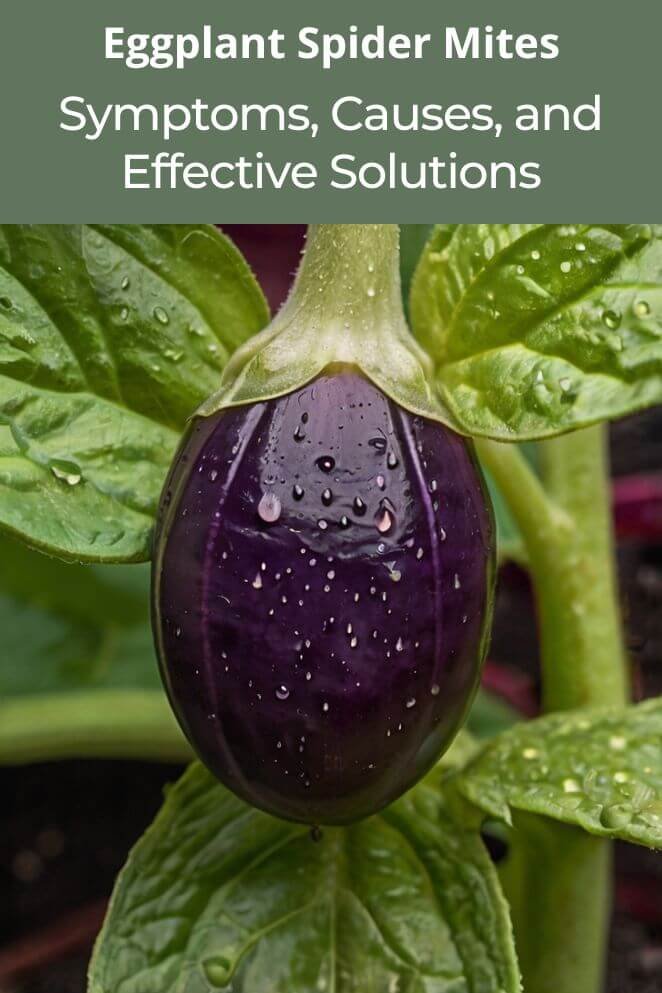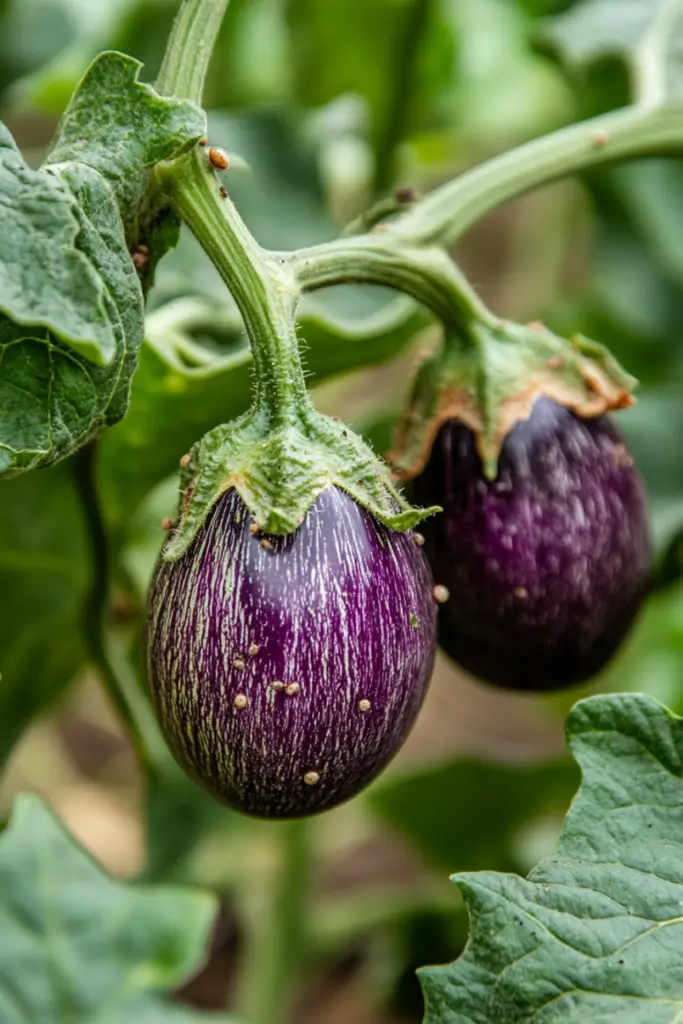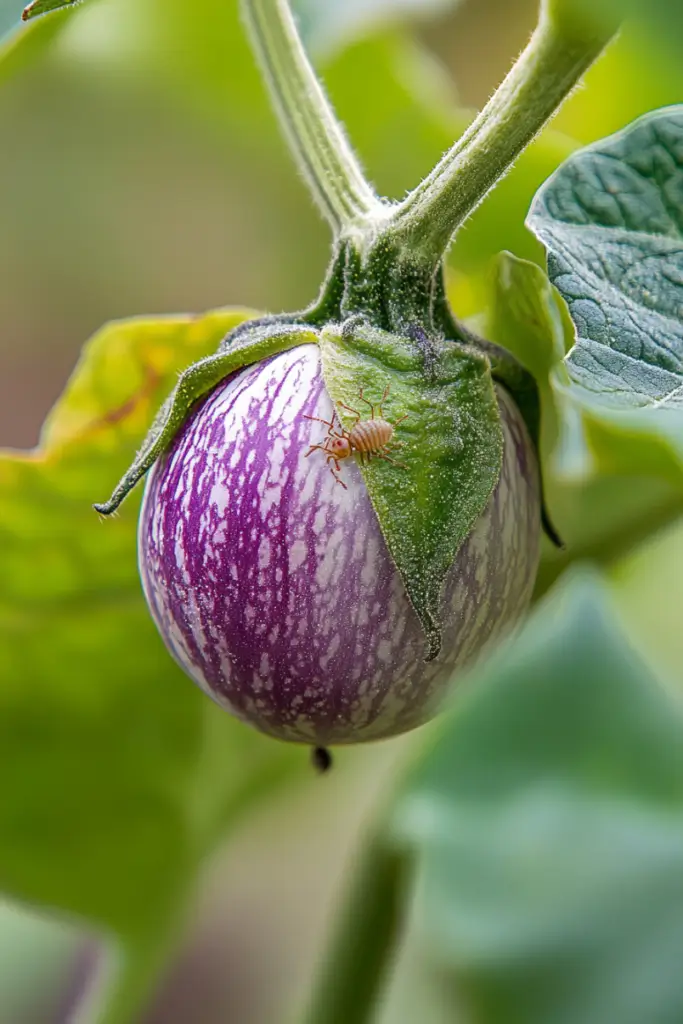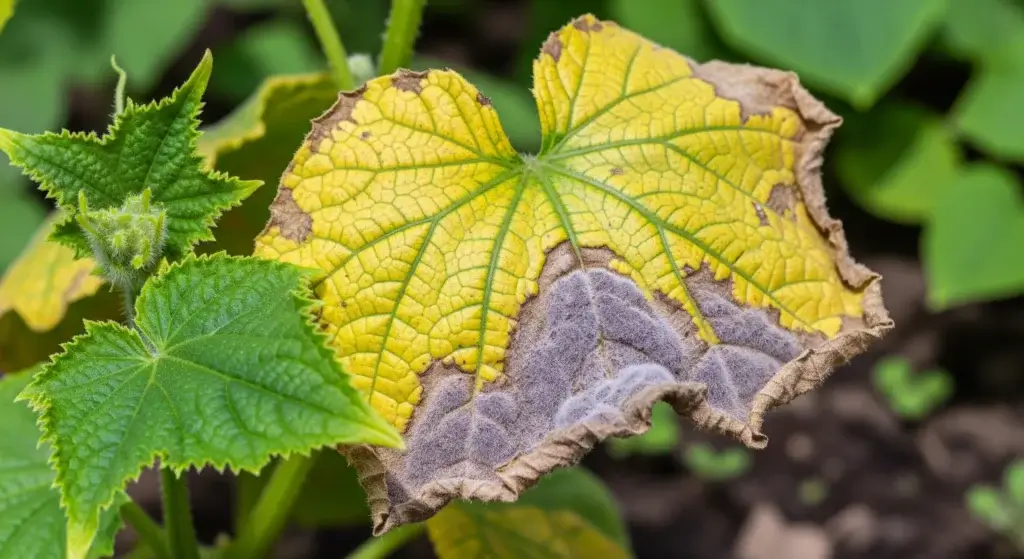
Eggplants, also known as aubergines, are a popular vegetable in gardens worldwide.
However, these vibrant purple plants are prone to various pests, one of the most common being spider mites.
Spider mites, tiny sap-sucking pests, can cause significant damage to eggplants, reducing yield and sometimes even killing the plants if left unchecked.
In this blog post, we’ll explore everything you need to know about spider mites on eggplants, from identifying signs of infestation to effective prevention and control methods.
Signs and Symptoms of Infestation
Identifying a spider mite infestation early is crucial for preventing severe damage to your eggplants.
Here are some tell-tale signs:
- Yellowing leaves: As spider mites suck the sap out of the leaves, they deprive the plant of essential nutrients, causing discoloration.
- Speckled leaves: These are feeding marks left by spider mites as they pierce the leaf tissue to feed on the plant’s fluids.
- Webbing: Spider mites produce fine webbing, especially on the undersides of leaves and between branches.
- Stunted growth: Infested eggplants may show stunted growth as the mites drain the plant’s resources, making it difficult for the plant to develop properly.
- Bronzing of leaves: Severe infestations can lead to a bronzed or burnt appearance of the foliage, which indicates significant damage.
Early detection of these signs can help in taking timely action to manage spider mite infestations effectively.
Causes and Factors Contributing to Spider Mite Infestations
Understanding the causes behind spider mite infestations can help in taking preventive measures.
Here are some common factors:
- Hot, dry conditions: Spider mites thrive in hot, dry weather. High temperatures and low humidity create a perfect breeding ground for these pests.
- Overuse of pesticides: Excessive use of broad-spectrum insecticides can kill beneficial insects and predators that naturally keep spider mite populations in check, leading to outbreaks.
- Plant stress: Factors like inadequate watering, poor soil quality, and lack of nutrients can weaken plants, making them more vulnerable to spider mites.
- Overcrowding: Overcrowded plants also limit air circulation, increasing humidity levels around the plants and promoting infestations.

Prevention Strategies
Preventing spider mite infestations is crucial for keeping your eggplants healthy.
Here’s a closer look at some effective strategies you can use:
Good agricultural practices (GAPs)
Following good agricultural practices is key to reducing the risk of pest problems, including spider mites.
This means regularly checking your plants for any signs of pests, keeping your garden clean, and ensuring your plants are growing in the best possible conditions.
By doing these things, you can catch problems early and make it harder for spider mites to take hold.
Plant selection and spacing
Choosing the right type of eggplant can make a big difference.
Some varieties are more resistant to pests like spider mites.
Additionally, giving your plants enough space when you plant them is important.
Proper spacing improves air circulation, which helps prevent spider mites from spreading.
When plants are too close together, they create a humid environment that spider mites thrive in, so spacing them out can help keep them at bay.
Maintaining healthy plants
Healthy plants are naturally better at fighting off pests.
To keep your eggplants strong, make sure they’re getting enough water, nutrients, and sunlight.
Regularly fertilizing and pruning your plants will keep them in good shape and less vulnerable to infestations.
When your plants are well-cared for, they’re more likely to resist spider mites and other pests.
Using companion planting
Companion planting is a natural way to protect your eggplants from spider mites.
Some plants, like marigolds, dill, and garlic, can either repel spider mites or attract insects that prey on them.
By planting these companions near your eggplants, you create a natural defense system that helps keep spider mites away.
This method not only protects your eggplants but also promotes a healthier garden overall.

Direct Control Methods
If you notice signs of a spider mite infestation, it’s crucial to take immediate action.
Here are some effective direct control methods:
Spray with soapy solution
One of the simplest and most effective methods is using a soapy solution.
To make this, mix two tablespoons of mild liquid soap with a gallon of water.
Then, spray the solution on the affected plants.
The soap works by breaking down the protective outer layer of the spider mites, causing them to dry out and die.
Be sure to thoroughly spray both the tops and undersides of the leaves, as mites often hide in these areas.
Use micronized sulfur powder
Micronized sulfur powder is an organic option that can effectively control spider mites.
It can be applied directly as a dust or mixed with water to create a spray.
The sulfur disrupts the mites’ ability to feed and reproduce, helping to reduce their population.
However, be careful when using sulfur, especially in hot weather, as it can damage plants if temperatures are too high.
Wash with strong jet of water
Sometimes, a simple solution like using a strong jet of water can be very effective.
By using a garden hose to spray the affected plants, you can physically knock the spider mites off the leaves.
Focus on the undersides of the leaves where the mites tend to gather.
This method works best when done early in the morning, allowing the plants to dry out during the day, which helps prevent further issues.
Neem extracts and bio products
Neem oil is a popular natural remedy for spider mites.
Neem-based products work by interfering with the mites’ feeding and reproductive processes, gradually reducing their numbers.
To use neem oil, apply it to your plants every seven days until the infestation is under control.
Make sure to cover all parts of the plant, including the undersides of the leaves, to maximize its effectiveness.
Diatomaceous earth
Diatomaceous earth is a natural powder made from the fossilized remains of tiny aquatic organisms.
When sprinkled on plants, it damages the spider mites’ exoskeletons, leading to their dehydration and death.
For best results, use food-grade diatomaceous earth and reapply it after rain or watering to ensure it continues working.
Predatory mites
Another natural method is introducing predatory mites, like Phytoseiulus persimilis or Amblyseius californicus.
These beneficial insects feed on spider mites, helping to control their population naturally.
You can purchase predatory mites from garden centers or online retailers.
By releasing them into your garden, you can create a balanced ecosystem where the spider mite population is kept in check.

Additional Tips
In addition to direct control methods, there are several proactive steps you can take to reduce the risk of spider mite infestations.
Here’s a closer look at these helpful tips:
Rotate crops
Crop rotation is a simple but effective strategy in the fight against spider mites.
By changing the type of plants you grow in a particular area each season, you disrupt the life cycles of pests like spider mites.
When you rotate crops, the pests that have settled in the soil or on leftover plant material from the previous season won’t find their preferred host plants, which helps reduce their numbers over time.
Avoid overfertilizing
While fertilizing your plants is essential for healthy growth, overdoing it can have the opposite effect.
Excess nitrogen in the soil encourages lush, tender growth, which is particularly appealing to spider mites.
These pests are attracted to soft, nutrient-rich leaves where they can easily feed.
Keep the garden clean
Maintaining a clean garden is a crucial step in preventing spider mite infestations.
Plant debris, fallen leaves, and weeds can provide shelter for spider mites and other pests, giving them a place to hide and multiply.
By regularly removing dead plant material and weeds from your garden, you eliminate potential hiding spots for these pests.

Final Thoughts
Spider mites can be a real headache for eggplant growers, but with vigilance and the right strategies, you can manage these pests effectively.
By understanding the signs of infestation, preventing conditions that encourage spider mites, and using direct control methods, you can protect your eggplants and ensure a healthy, bountiful harvest.



